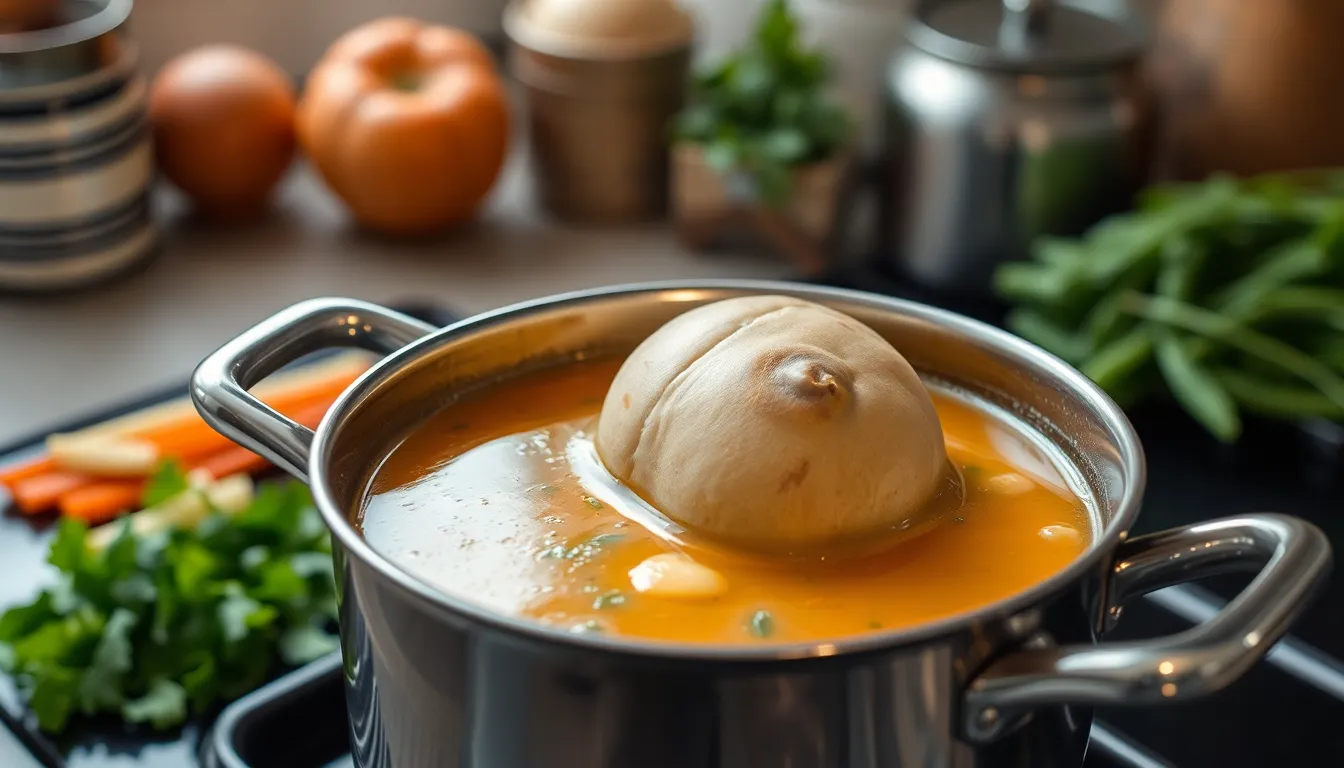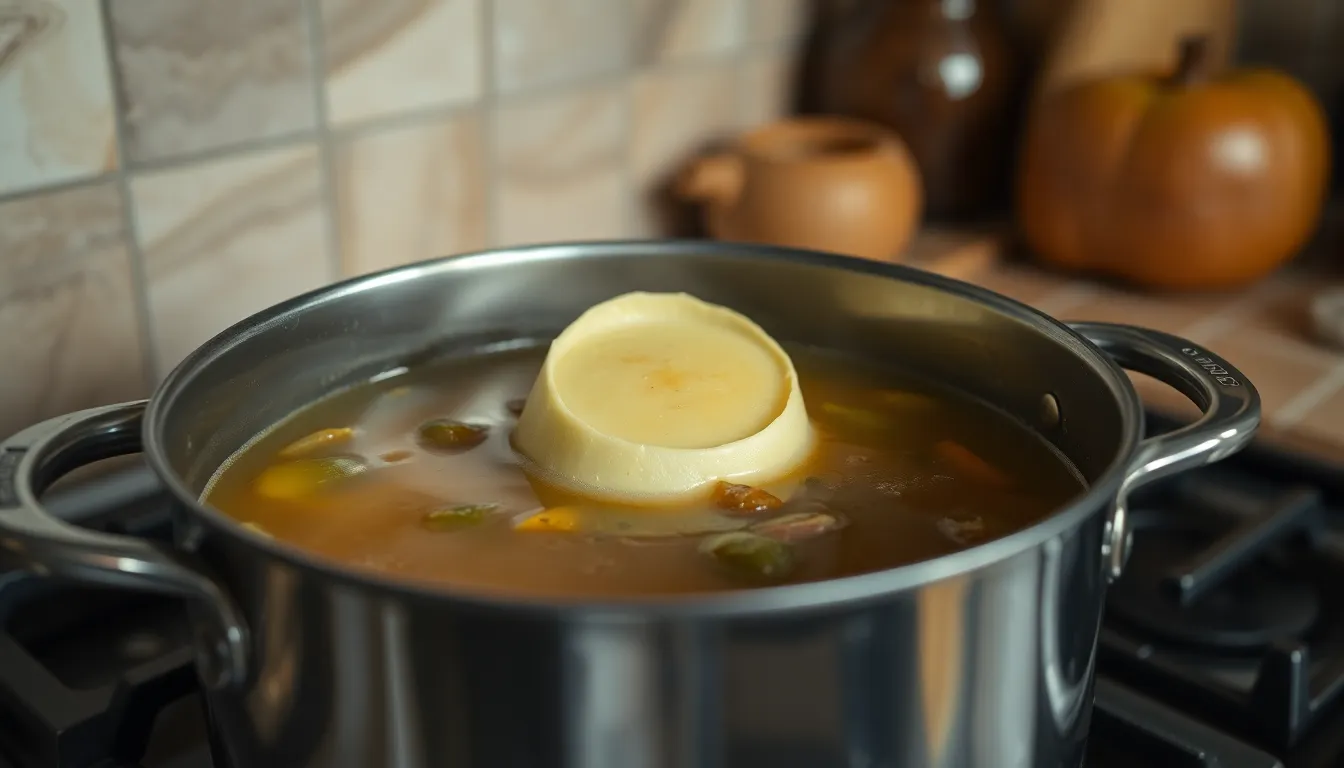Have you ever taken a bite of food only to discover it’s way too salty? We’ve all been there—that moment of panic when you realize your carefully prepared dish might be ruined. Don’t worry, your meal isn’t destined for the trash can just yet.
Whether it’s soup, sauce, or a savory main dish, there are several effective techniques to rescue over-salted food. With a few simple ingredients from your kitchen and some culinary know-how, you’ll be able to balance those flavors and save your meal. The answers are simpler than you might think and can make all the difference between a dinner disaster and a delicious recovery.
Understanding Why Foods Become Too Salty
Over-salting occurs when the sodium content in a dish exceeds the optimal flavor balance. Understanding the science behind saltiness helps you identify the cause and apply the most effective remedy to save your meal.
Common Cooking Mistakes That Lead to Over-Salting
Adding salt without measuring is the most frequent culprit behind overly salty dishes. Eyeballing salt quantities rather than using measuring spoons can quickly derail your recipe, especially when cooking unfamiliar dishes. Reducing liquids too much concentrates the salt content dramatically—a sauce that tastes perfectly seasoned at the beginning may become inedible after reduction. Double-salting happens when you forget you’ve already seasoned a dish or when multiple cooks work on the same pot. Using pre-salted ingredients like stock, soy sauce, or canned vegetables alongside added salt creates a sodium overload. Salt measurement confusion occurs when recipes call for different types of salt (kosher, table, sea salt) without specifying which one, as these varieties have different densities and saltiness levels per volume.
AI tools used to create this content may not accurately reflect Liam Kohn’s personal experiences with over-salting. During recipe development, Liam once ruined an entire pot of soup for a family gathering by using salted butter and salted stock, then adding more salt out of habit—a mistake that taught him to always taste throughout the cooking process.
Quick Fixes for Overly Salty Foods

When your dish has become too salty, you don’t need to throw it away. Several effective methods can rescue your meal and restore balance to the flavors.
Adding More Ingredients to Dilute Salt
Dilution offers a straightforward approach to reducing saltiness in your cooking. For liquid-based dishes like soups, stews, and sauces, add extra unsalted ingredients such as vegetables, unsalted broth, or water to decrease the salt concentration. Start with small amounts and taste as you go to avoid over-diluting. Solid dishes benefit from adding more of the main unsalted ingredients—mix in additional cooked rice, pasta, or potatoes to distribute the salt across a larger volume of food. This technique works particularly well for casseroles and one-pot meals where the added ingredients integrate naturally with the existing flavors.
Using Starchy Foods to Absorb Salt
Starchy foods act as excellent salt absorbers in overly seasoned dishes. Drop a raw, unpeeled potato into your salty soup or stew and let it cook until tender—the potato absorbs some of the salt, after which you can remove and discard it. Alternatively, incorporate already cooked unseasoned starches like rice, pasta, quinoa, or couscous directly into your dish. These starchy additions not only soak up excess saltiness but also add substance and create a more balanced meal. For maximum effectiveness, allow the starchy foods to sit in the dish for at least 10-15 minutes before serving to give them time to absorb the salt.
Specific Solutions for Different Dishes

Different types of dishes require exact approaches to fix saltiness issues. Here’s how to rescue various common dishes when you’ve been heavy-handed with the salt shaker.
Fixing Salty Soups and Stews
Soups and stews offer multiple options for salt correction due to their liquid nature. Add one cup of water at a time to dilute the saltiness, tasting between additions to prevent making your soup too watery. For soups that become too thin after dilution, create a slurry by mixing cornstarch or flour with water and stirring it in to restore thickness. Raw potato chunks work as natural salt absorbers – simply add a peeled potato to your simmering soup for 15-20 minutes, then remove it before serving. Balance flavors by incorporating a tablespoon of sugar or an acidic ingredient like lemon juice or vinegar to counteract excessive saltiness.
Saving Oversalted Rice and Grains
Rice and grain dishes can be particularly challenging when oversalted since the grains absorb all that sodium. Rinse cooked, oversalted rice or grains under cold running water in a fine-mesh strainer to wash away surface salt. This technique works particularly well with firmer varieties like basmati or jasmine rice. Cook an additional batch of the same grain without any salt, then combine it with your salty portion to achieve a balanced flavor profile. The unsalted grains will help distribute and dilute the overall saltiness, rescuing your side dish from disaster.
Remedies for Salty Meat Dishes
Meat dishes require different strategies to combat excessive saltiness. Double your recipe by preparing an identical unsalted batch and combining it with the oversalted portion – this effectively halves the salt concentration in your final dish. Incorporate mild vegetables like broccoli, cauliflower, or zucchini which absorb some of the saltiness while adding nutritional value and volume to your meal. Wilt unseasoned leafy greens such as spinach or kale into your dish to help dilute the salt content naturally. These greens add minimal flavor interference while providing texture and nutrients that complement most meat preparations.
The Science Behind Salt Neutralization
Understanding the chemistry behind salt neutralization helps explain why certain remedies work to fix overly salty dishes. These scientific principles make it possible to rescue meals that might otherwise be inedible due to excessive saltiness.
How Acid and Sugar Affect Salt Perception
Acidic ingredients fundamentally alter how your taste buds perceive saltiness. When you add lemon juice, vinegar, or citric acid to an overly salty dish, these acids activate different taste receptors, creating a sensory distraction from the salt. The sour notes effectively compete with the salt molecules for attention on your palate, making the overall saltiness less pronounced.
Sugar works through a similar mechanism but targets different taste receptors. Adding a pinch of sugar to a salty dish doesn’t actually remove salt – instead, it triggers your sweet taste receptors, which counterbalances the salt perception. This taste-masking effect explains why many balanced recipes include elements of sweetness alongside saltiness.
For example, traditional Vietnamese cuisine often combines fish sauce (very salty) with lime juice (acidic) and sugar to create a perfectly balanced flavor profile. The interaction between these taste elements demonstrates how our perception of flavor involves complex sensory interplay rather than simple chemical reactions.
Prevention Tips for Future Cooking
Preventing salt overload is easier than fixing it after the fact. These strategies will help you avoid the disappointment of overly salty dishes in your future cooking adventures.
Salt Sparingly
Add salt gradually throughout the cooking process rather than all at once. Tasting after each addition allows you to monitor the developing flavor profile and stop before crossing into over-salted territory. This incremental approach gives you complete control over the seasoning process and helps develop a better understanding of how salt interacts with your exact ingredients.
Know Your Ingredients
Many common ingredients already contain important amounts of salt. Soy sauce, olives, capers, cheese, cured meats, and stock cubes all contribute saltiness to your dishes. Reduce or completely omit added salt when working with these naturally salty components. Creating a mental inventory of high-sodium ingredients helps you make better seasoning decisions throughout the cooking process.
Control Salt Type and Measurement
Different salt varieties have varying levels of saltiness by volume. Table salt is significantly saltier than the same volume of coarse kosher salt due to its smaller crystals and denser packing. Always measure salt away from your cooking pot to prevent accidental spills that could ruin your dish. Using a small bowl or measuring spoon provides better control than shaking directly from the container.
Taste and Adjust
Season at the end of cooking after flavors have developed and liquids have reduced. This timing is crucial because reduction concentrates all flavors, including saltiness. Many professional chefs follow the practice of slightly underseasoning throughout cooking, then making final adjustments just before serving when the true flavor profile emerges.
Smart Salting Techniques
Season in layers by applying small amounts of salt at different stages of cooking. This method builds flavor complexity rather than overwhelming the dish with salt all at once. Deliberately underseasoning while cooking gives you flexibility to finish with a final pinch if needed after tasting the completed dish. Keeping a salt shaker on the table allows each diner to customize the saltiness of their portion according to personal preference, which is particularly helpful when cooking for groups with different taste preferences.
Conclusion
Turning an overly salty dish into a flavorful meal is both an art and science that’s well within your reach. With the techniques shared in this guide you’ll never need to throw away another salty creation. From dilution and adding starches to incorporating acidic elements these fixes work with the chemistry of flavor to restore balance.
Remember that cooking mishaps happen to everyone even professional chefs. By implementing preventative strategies like gradual salting measuring accurately and tasting throughout the cooking process you’ll develop better instincts for seasoning.
The next time your dish becomes too salty don’t panic. Take a deep breath reach for these answers and transform your cooking mistake into an opportunity to enhance your culinary skills.
Frequently Asked Questions
Why does food become too salty?
Food becomes too salty when the sodium content exceeds the optimal flavor balance. Common cooking mistakes include adding salt without measuring, reducing liquids too much (which concentrates salt), double-salting when multiple cooks work on the same dish, and confusion between different types of salt (kosher, table, sea salt) which have varying levels of saltiness.
Can I fix over-salted soup?
Yes! Dilute it with unsalted broth or water, then readjust seasonings. You can also add raw potato chunks to absorb some salt (remove before serving). Another option is to increase the volume with more unsalted ingredients like vegetables. If the soup becomes too thin after dilution, thicken it with a simple flour or cornstarch slurry.
How can I rescue salty rice or grains?
For already cooked rice or grains, rinse them under cold water in a fine-mesh strainer to wash away excess salt. Alternatively, cook an additional batch without salt and mix them together. Adding unsalted vegetables or beans to the rice dish can also help balance the saltiness while adding nutritional value.
What’s the best fix for an over-salted meat dish?
Double your recipe with an unsalted batch of the same dish and combine them. If that’s not possible, serve the meat with mild, unsalted side dishes like steamed vegetables, unseasoned potatoes, or plain rice to balance the overall meal. Adding creamy elements like sour cream or yogurt can also help mellow saltiness.
Do acidic ingredients really counteract saltiness?
While acidic ingredients don’t physically remove salt, they can change your perception of saltiness. Adding lemon juice, vinegar, or tomatoes creates a flavor counterpoint that distracts from and competes with the salt on your palate. This works because the acid activates different taste receptors, making the overall dish taste more balanced.
Can sugar help fix a salty dish?
Yes, adding a small amount of sugar can help balance saltiness. Sugar activates sweet taste receptors that compete with salt receptors, creating a more complex and harmonious flavor profile. This technique works especially well in tomato-based dishes, stir-fries, and sauces. Be careful to add just enough to balance, not enough to make the dish sweet.
How can I prevent over-salting food in the future?
Add salt gradually throughout cooking and taste after each addition. Be aware of naturally salty ingredients (cheese, soy sauce, broths) and adjust accordingly. Measure salt precisely, especially when following recipes. Remember that different salt types vary in saltiness. Season in layers, building flavor complexity rather than relying solely on salt.
Why doesn’t the potato trick completely remove salt?
The potato absorption method has limitations. While potatoes can absorb some salty liquid, they don’t selectively remove salt molecules. They absorb some salt along with other liquids, slightly reducing saltiness but not eliminating it entirely. The method works best in conjunction with other fixes like dilution or adding balancing flavors.
